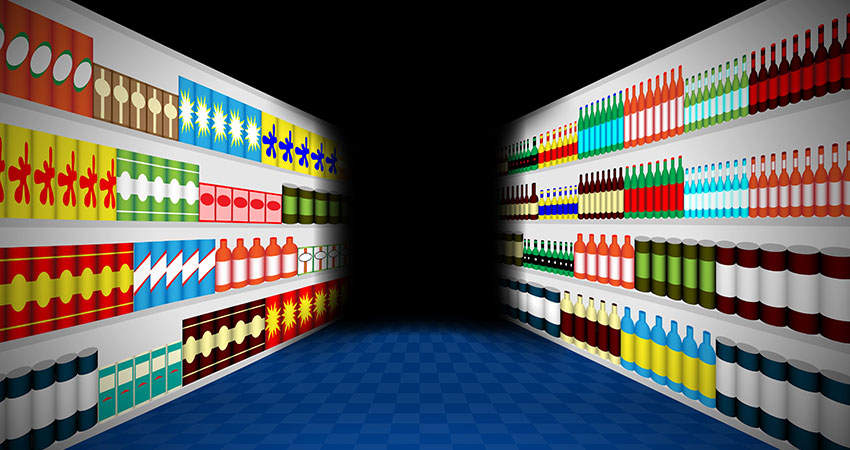By Mike Chou
Source: multichannelmerchant.com, January 2021
Everything about retail has been turned upside down in the past year with the massive online migration. Even full grocery trips have gone digital, with curbside pickup, home delivery and in-store fulfillment
Retailers without a strong social presence, or the resources to offer consumers all the convenience of ecommerce behemoths, have quickly found themselves left in the dark. That is, of course, until the rise of dark stores.
Dark stores are brick-and-mortar locations that have been made over into fulfillment operations, offering shoppers options like same-day delivery or buy online, pickup in store (BOPIS).
A Light in the Darkness
This trend already has a solid foothold. Bed Bath & Beyond is converting 25% of its locations into dark stores, and Walmart other national retailers plan to do the same in certain locations. Even some shopping malls have gone this route during the pandemic in an effort to better compete with Amazon – which of course is doing it as well – and other ecommerce giants.
Going dark, even temporarily, can help offset the cost of underperforming stores and the expense of freight and logistics, especially in more densely populated areas. It also takes online fulfillment out of store operations, allowing retailers to concentrate on customer service and minimizing a great deal of confusion around inventory. Team members are no longer ransacking store shelves, packing goods and then replenishing backroom stock.
But this dark store movement isn’t limited to just household goods. Many local, regional and national grocers are making the move. Although Whole Foods is probably the largest to convert stores into fulfillment centers, Kroger, Giant Eagle, Hy-Vee and Stop & Shop are all experimenting with this idea. Some grocers are even exploring dark aisles, where shoppers can access only a part of the store with the rest devoted to online fulfillment.
Clearly, this experiment has seen promising results in the midst of COVID-19. Now, retailers must ask themselves this: Do dark stores have a place in a post-COVID world?
Out From Under the Cloak of COVID-19
Although some argue that dark stores will eventually become unprofitable and cost prohibitive, I see the situation differently. When employing a more holistic, harmonic approach to this trend, remaining dark can work. It’s all about finding the right mix of best-in-class store experiences, customer service and operational flexibility that boasts a healthy mix of BOPIS, ecommerce and efficient delivery solutions.
Key to success is integrating multiple channels and fulfillment solutions with both online and offline experiences to guide consumers toward purchase. That’s easier said than done, no doubt. But utilizing in-house talent to break down operational silos is often a good place to start. You need different departments working toward the same goal to keep both dark stores and normal retail outlets profitable. Each touchpoint along the customer journey should be just as compelling as the last.
Beyond that, partnerships with third-party services can also prove beneficial, as they can sometimes help drive down costs and build awareness. Uber Eats and DoorDash, for instance, are always advertising deals for pickup at certain restaurants and convenience stores. What an easy way to get consumers back to your store — even if it’s just curbside at a dark locale!
But dark stores shouldn’t be your only strategy. Keep expanding your assortment, opting to create a one-stop shop for essentials or a hybrid model where you use an adjacent retail space as an ecommerce fulfillment center. And let’s not forget experiential elements, as the shopping experience itself can drive people back to a store. H-E-B went all-in with its new 100,000-square-foot grocery stores, creating experiential shopping destinations with curbside pickup, local foods, barbecue restaurants and spaces for musicians to play gigs on weekends.
Although dark stores might just be a Band-Aid for some retailers, this trend does have staying power with the proper execution and follow through. You can’t expect a dark location to remain at all profitable after COVID-19 if you just let it sit. You’ll still need to focus on convenience and experience to keep it permanently dark and profitable.
Mike Chou is director of business development at Harbor Retail

